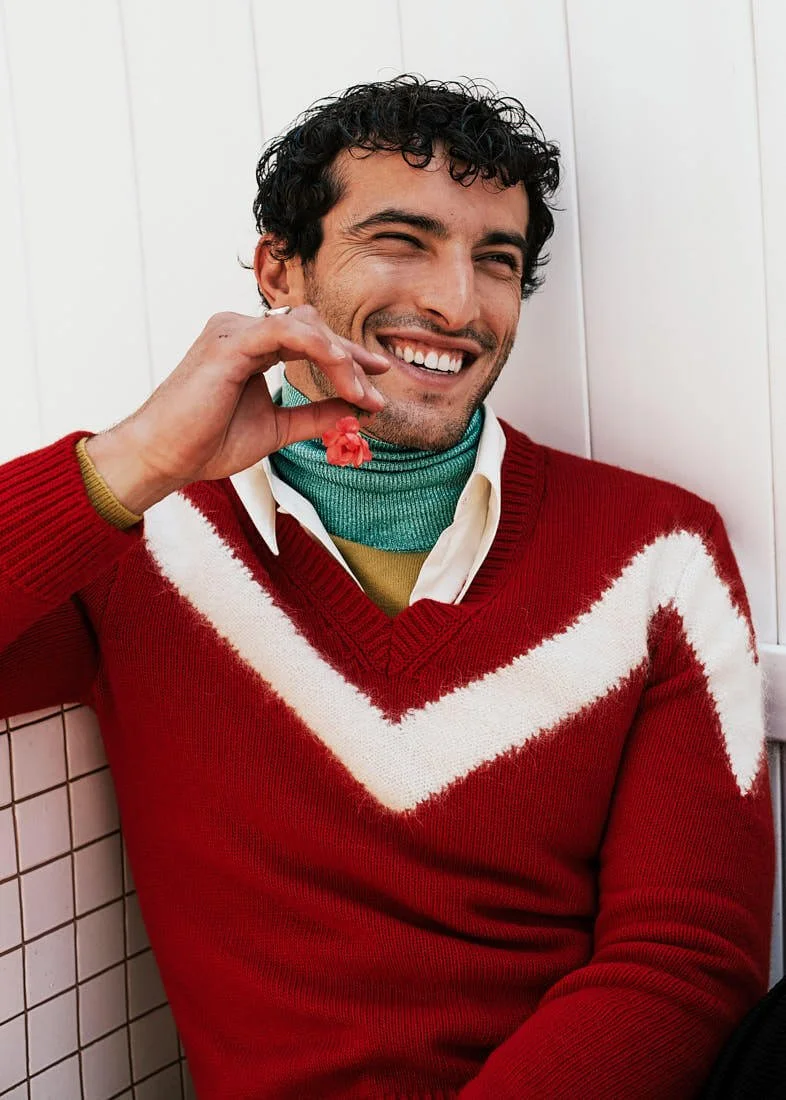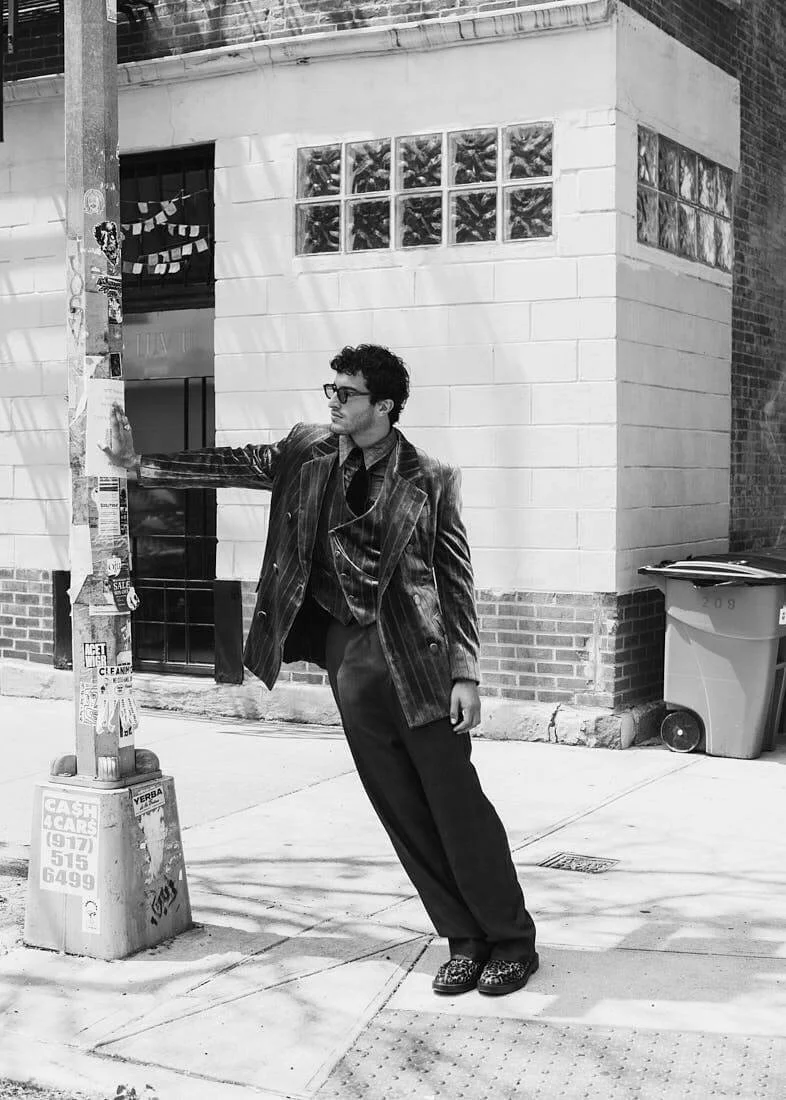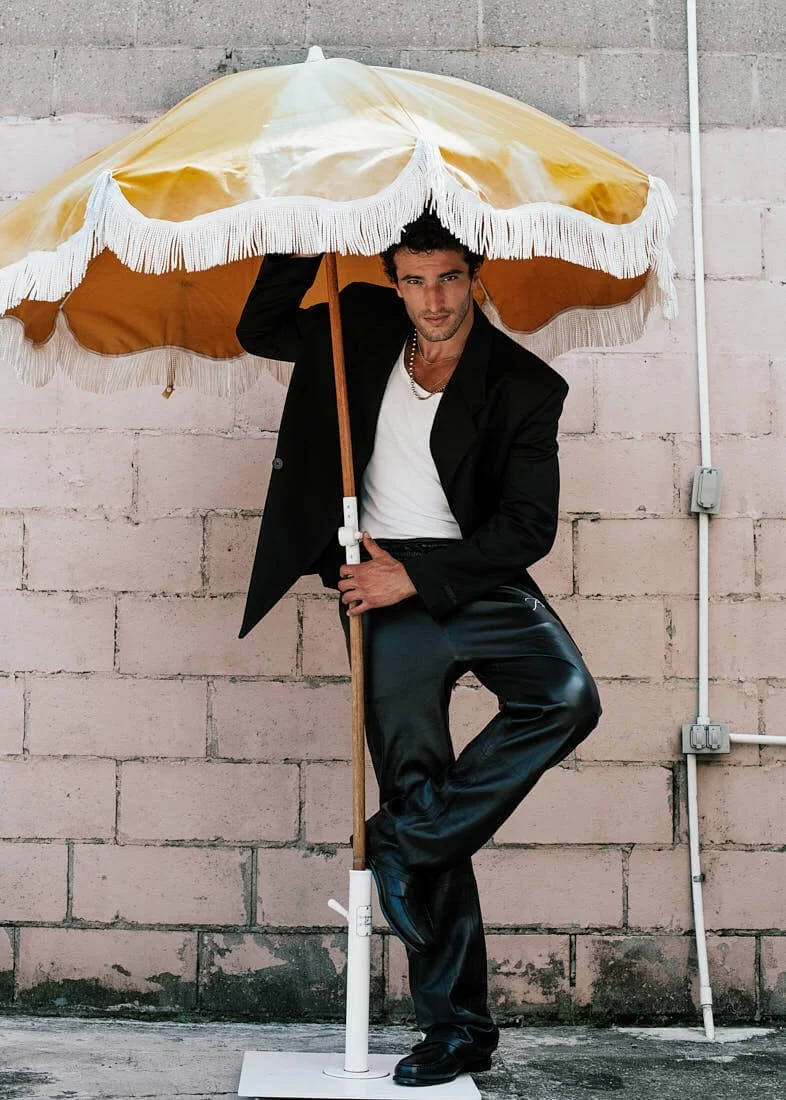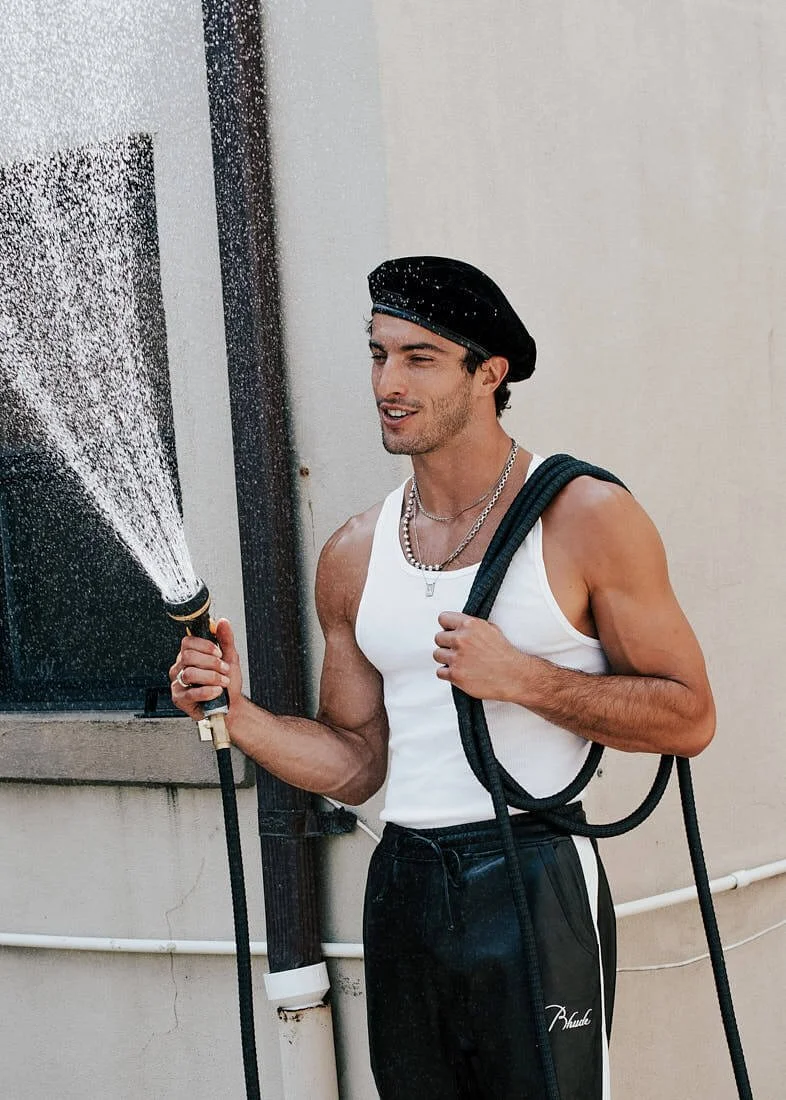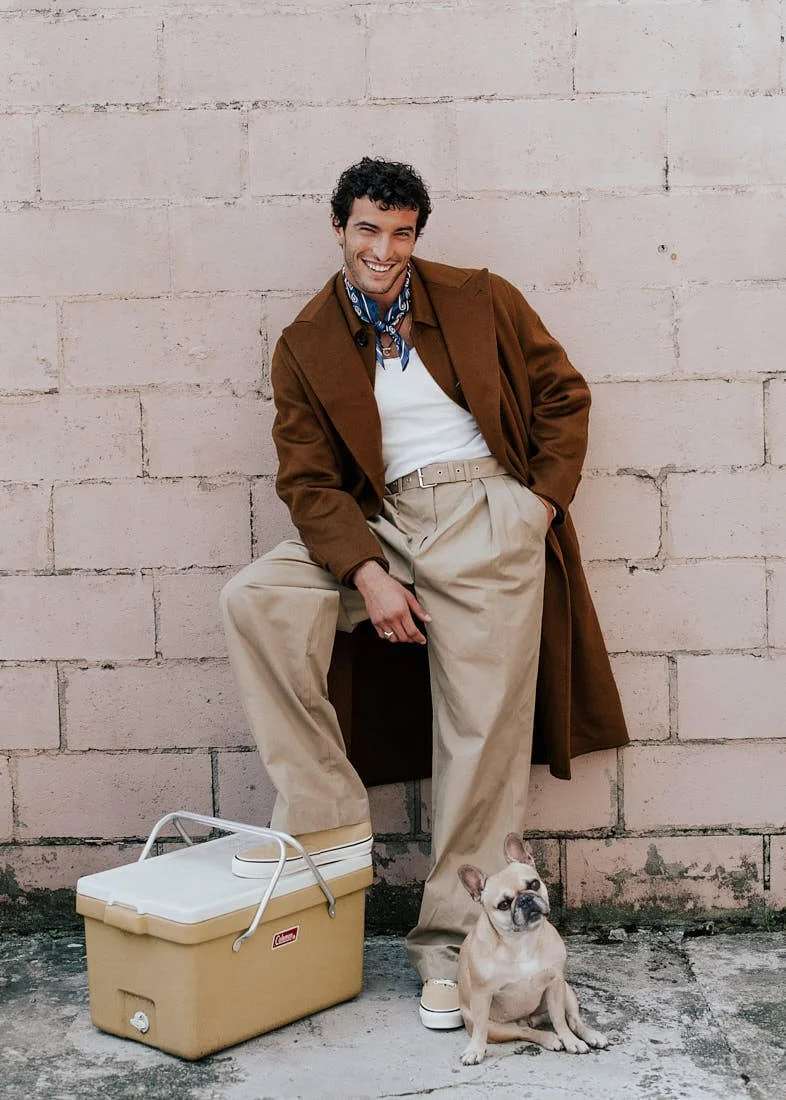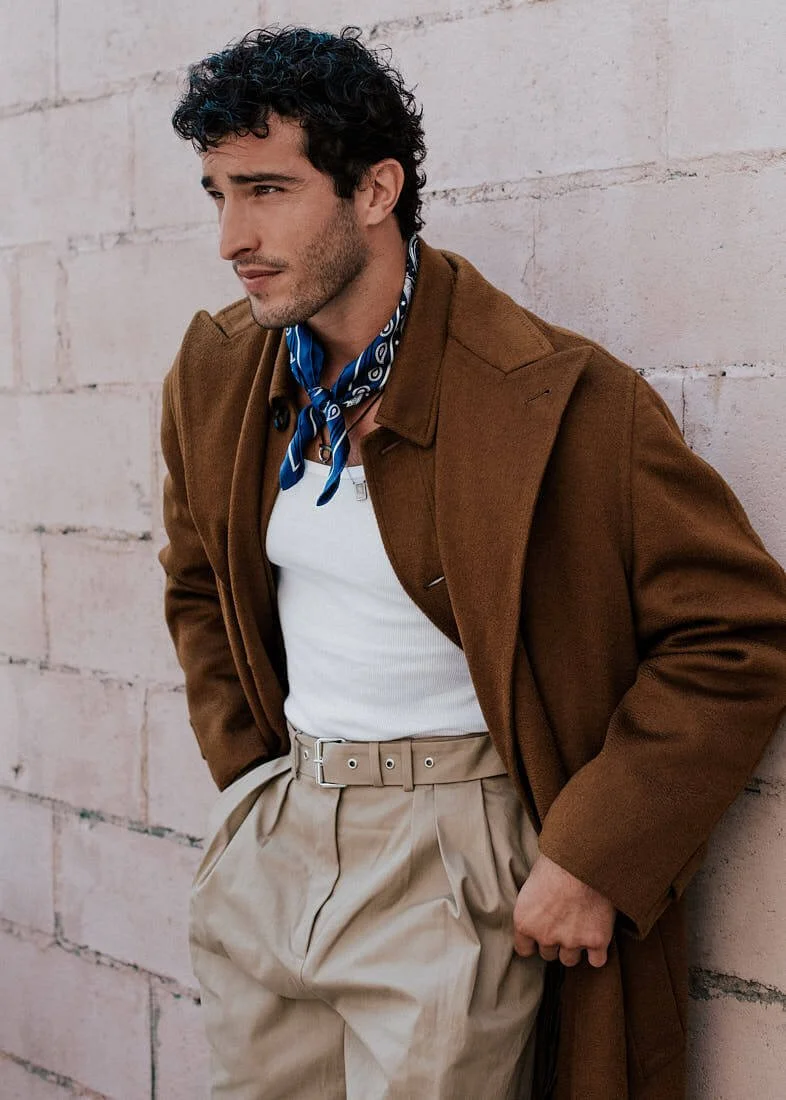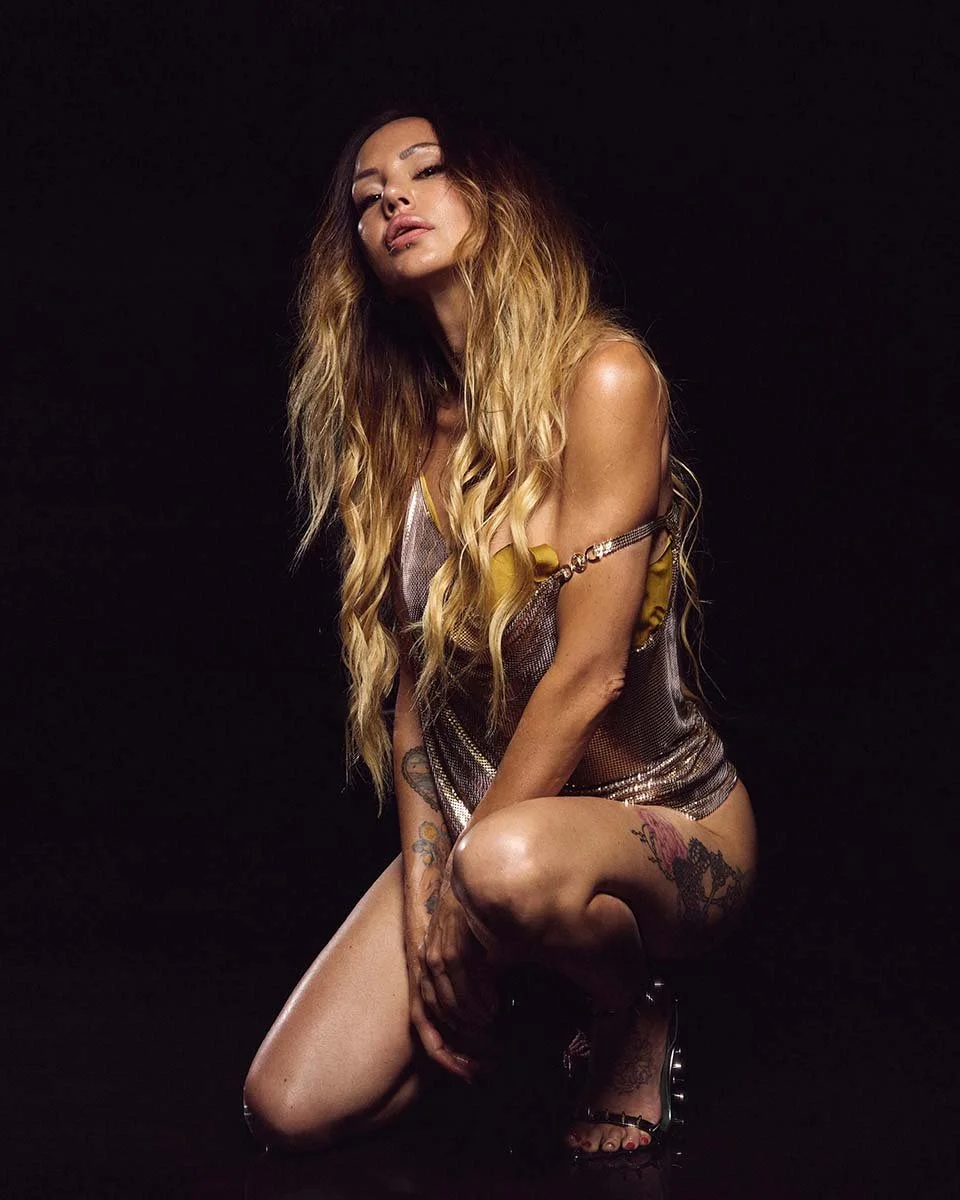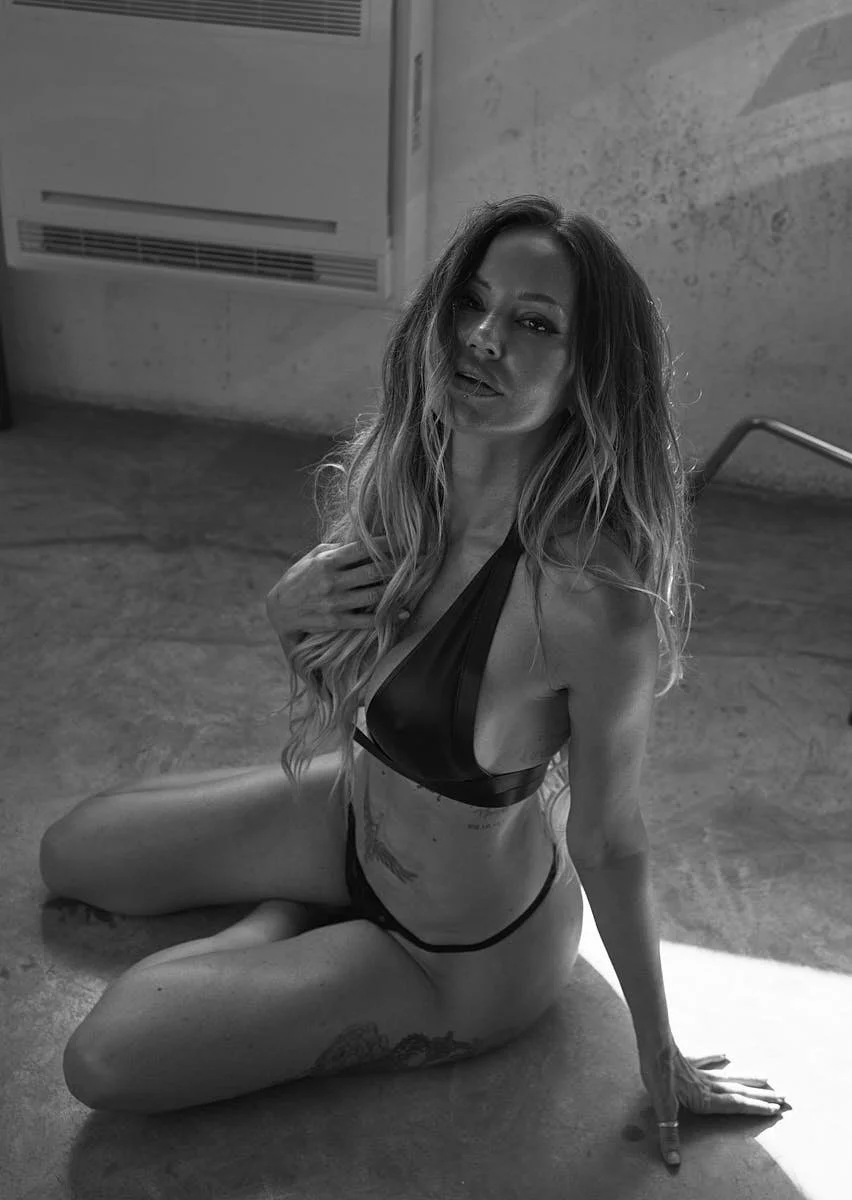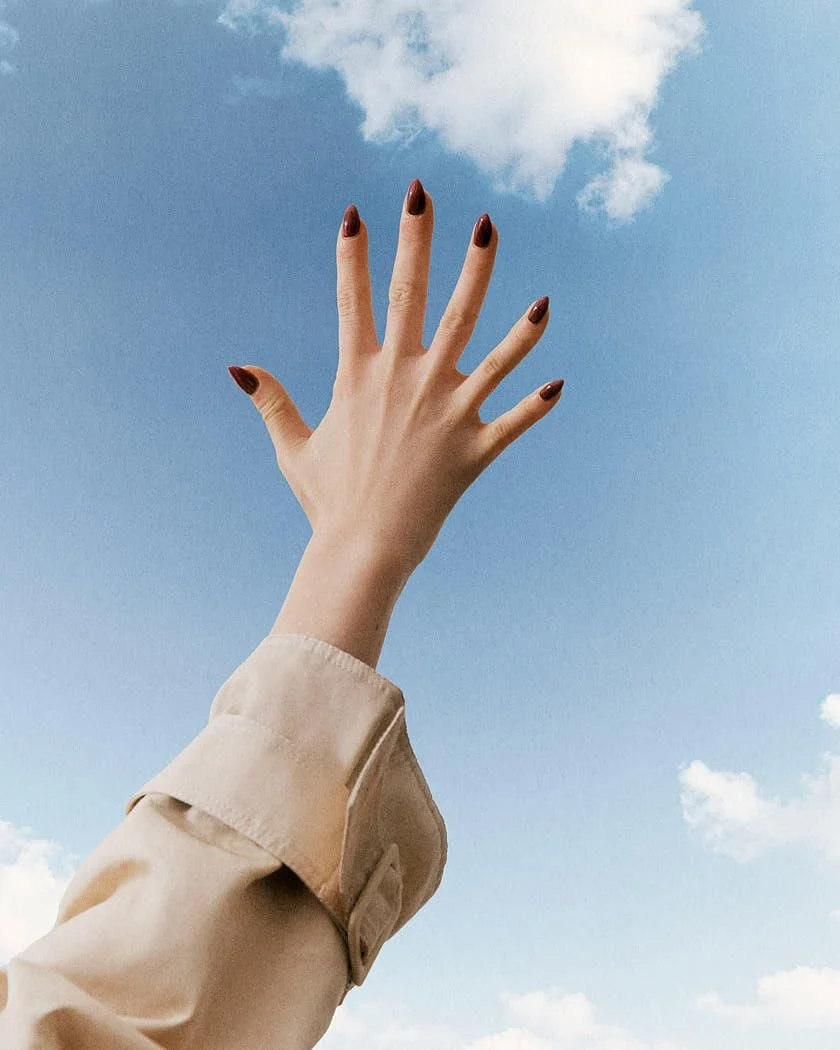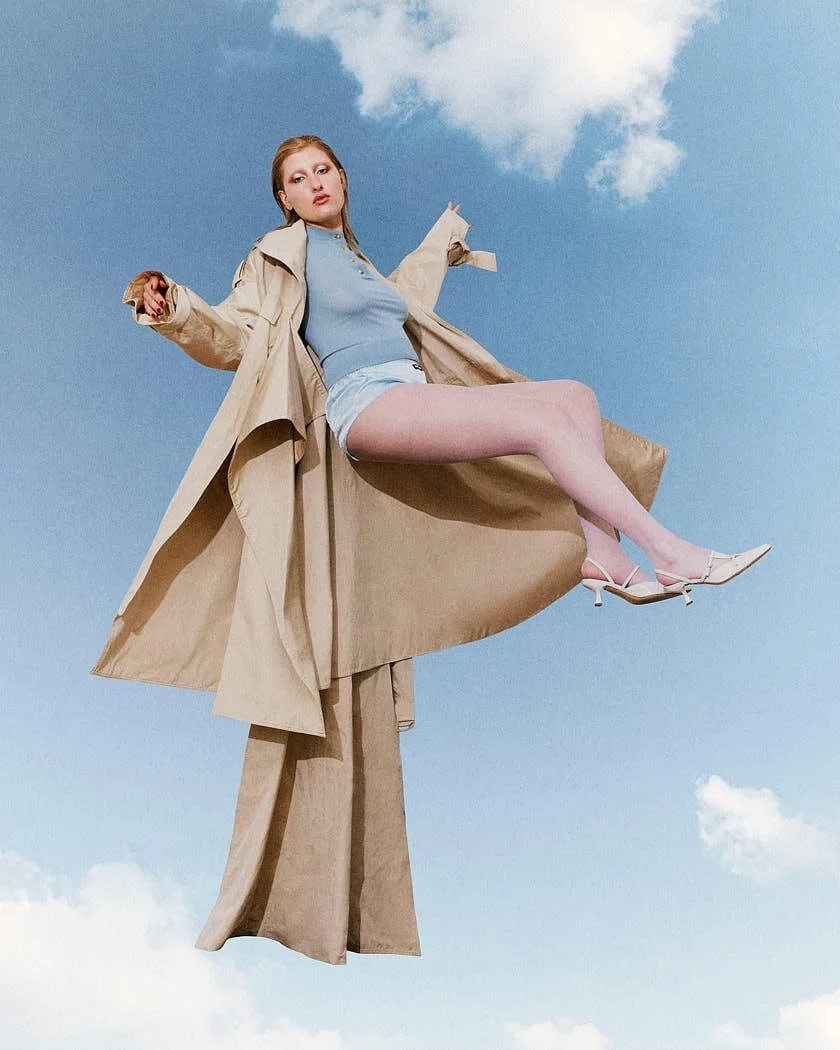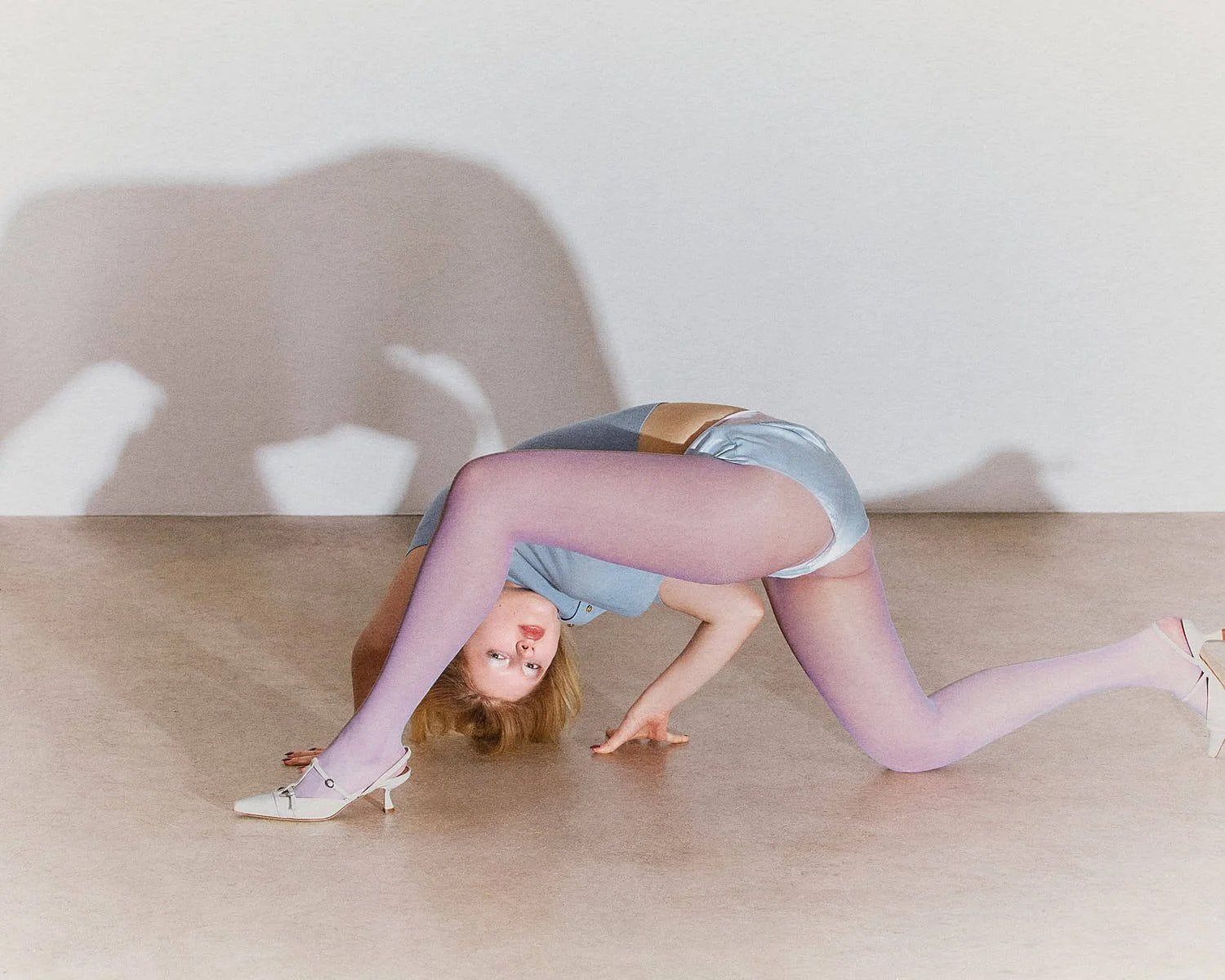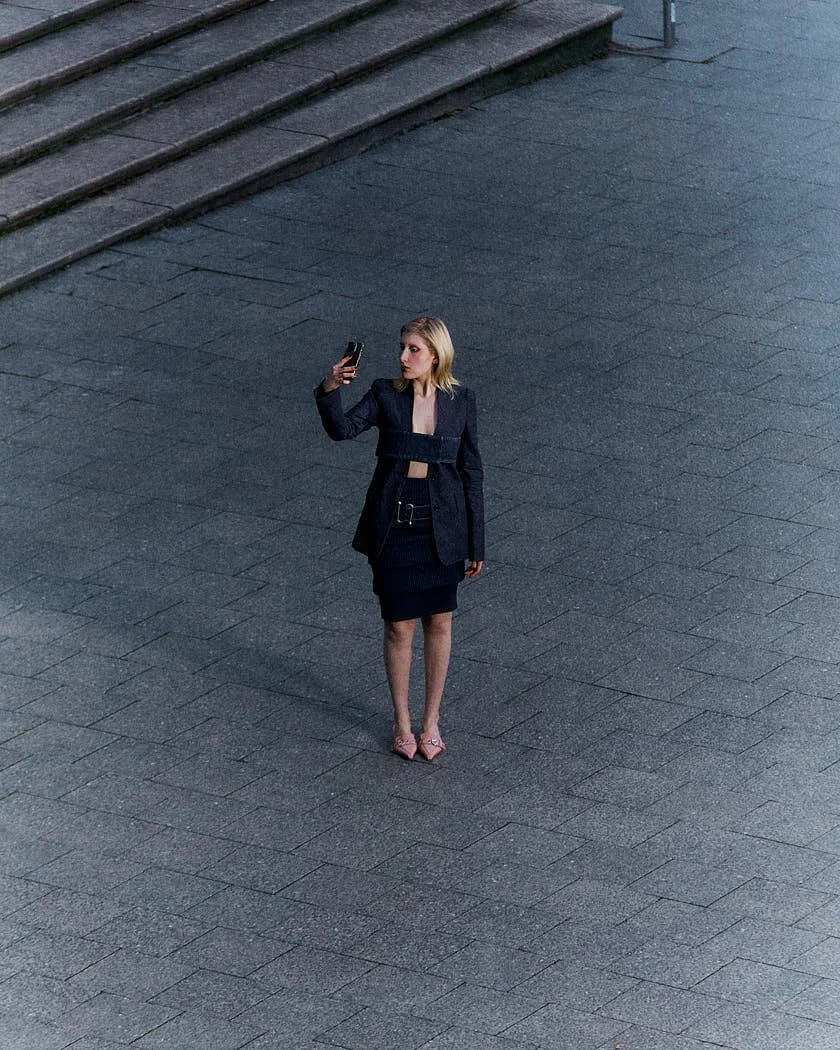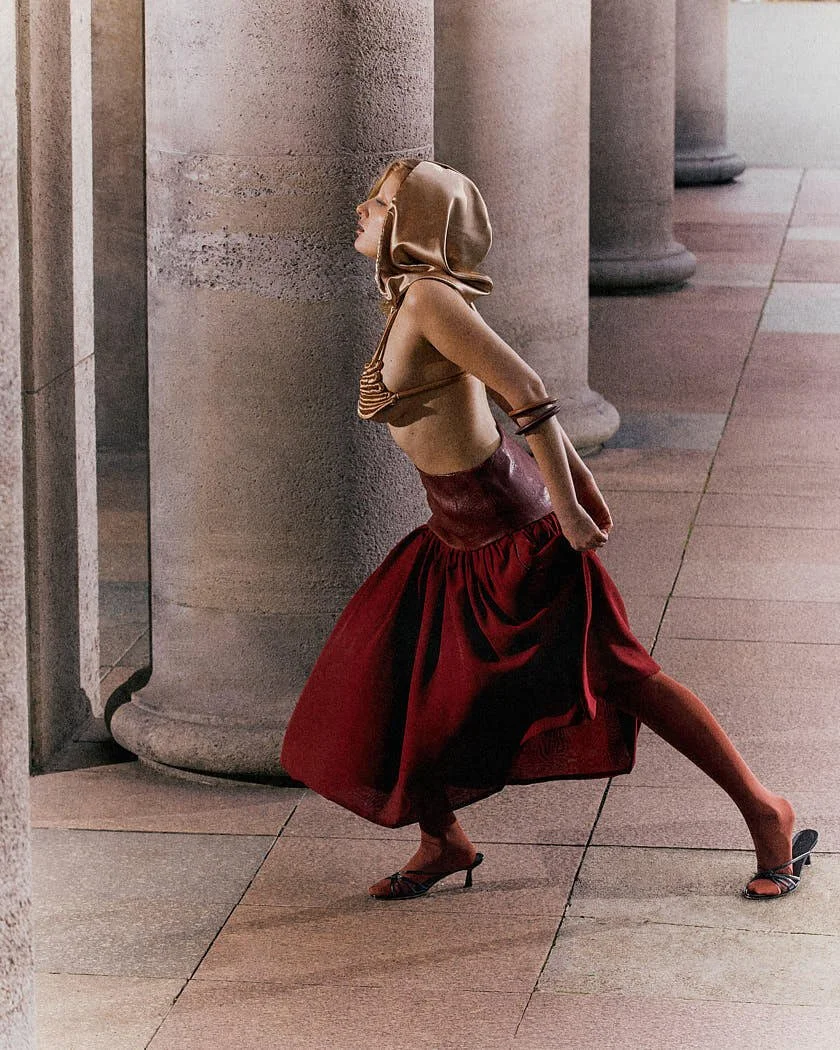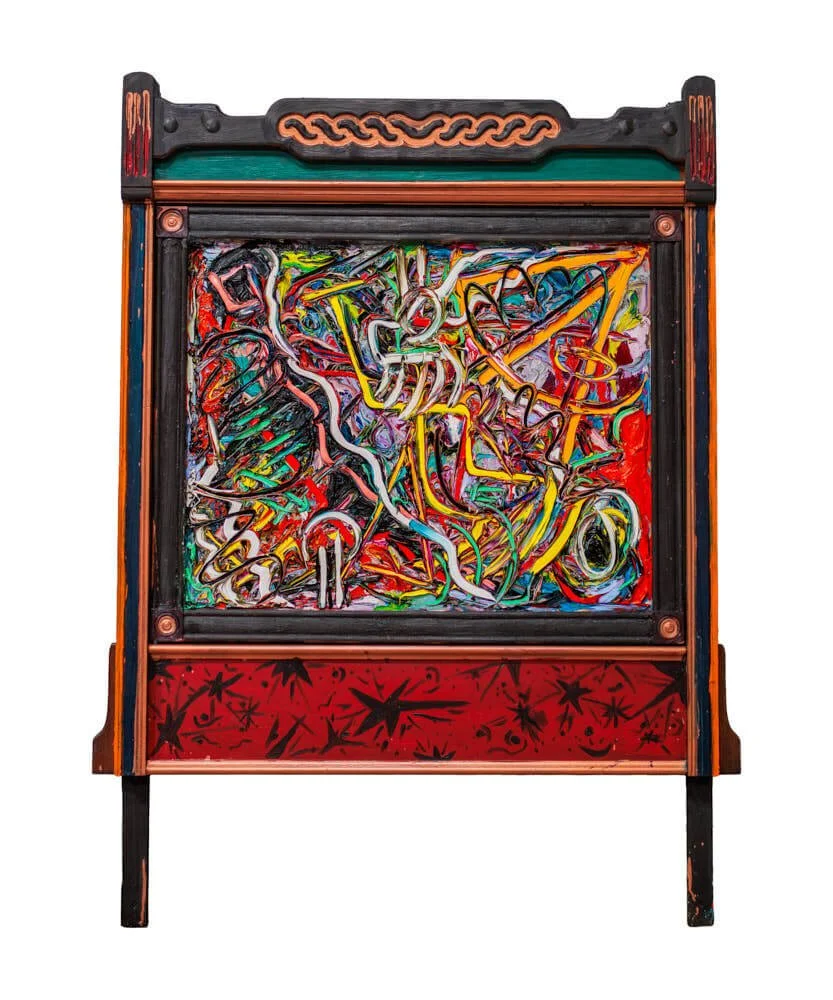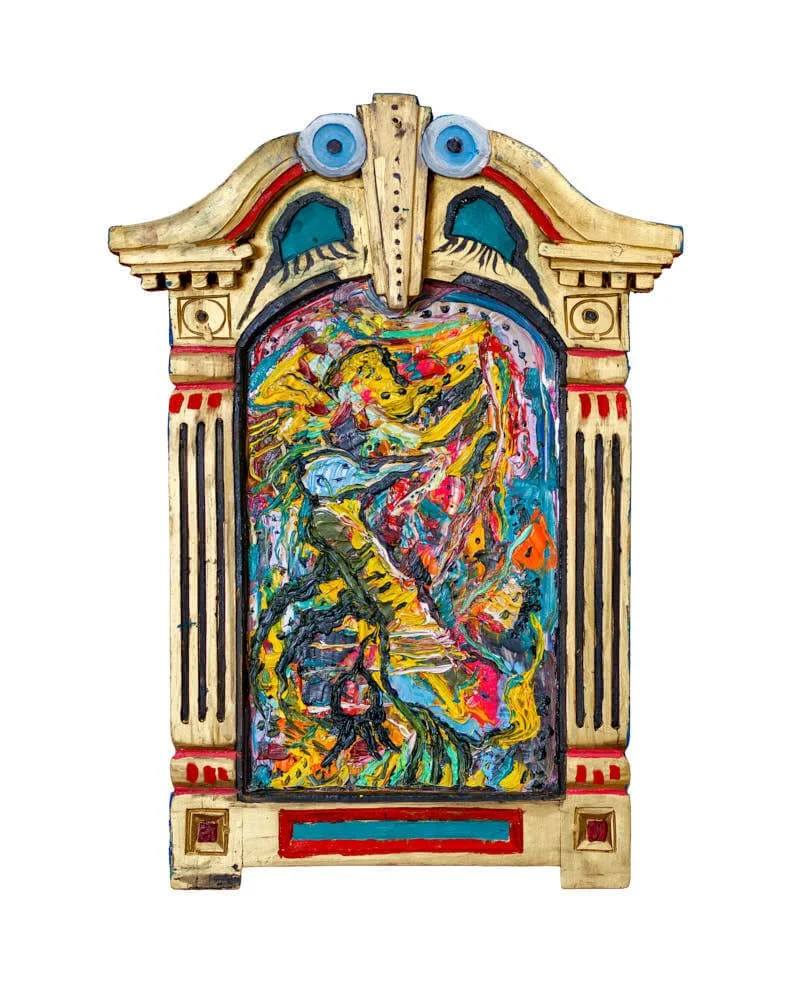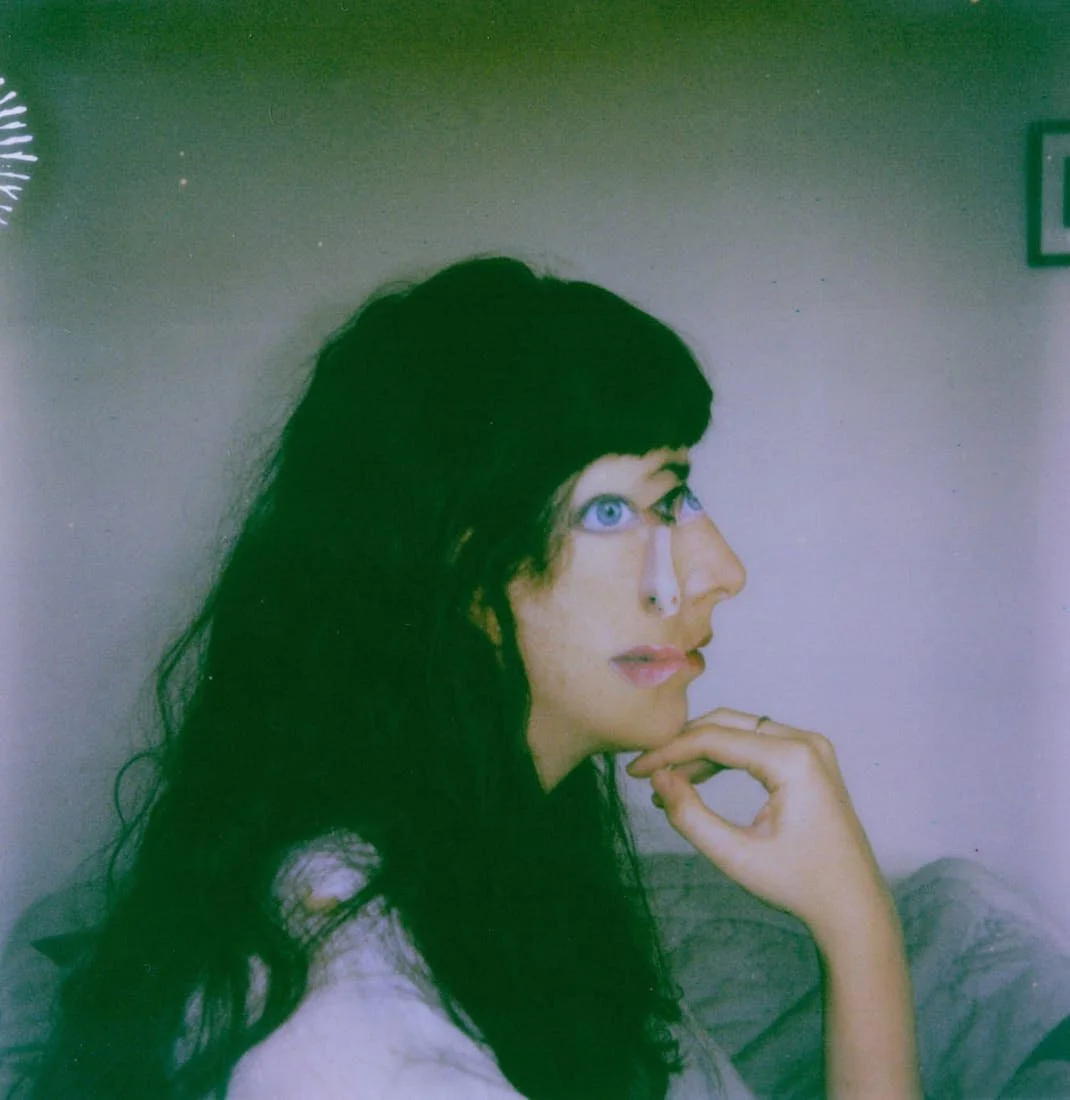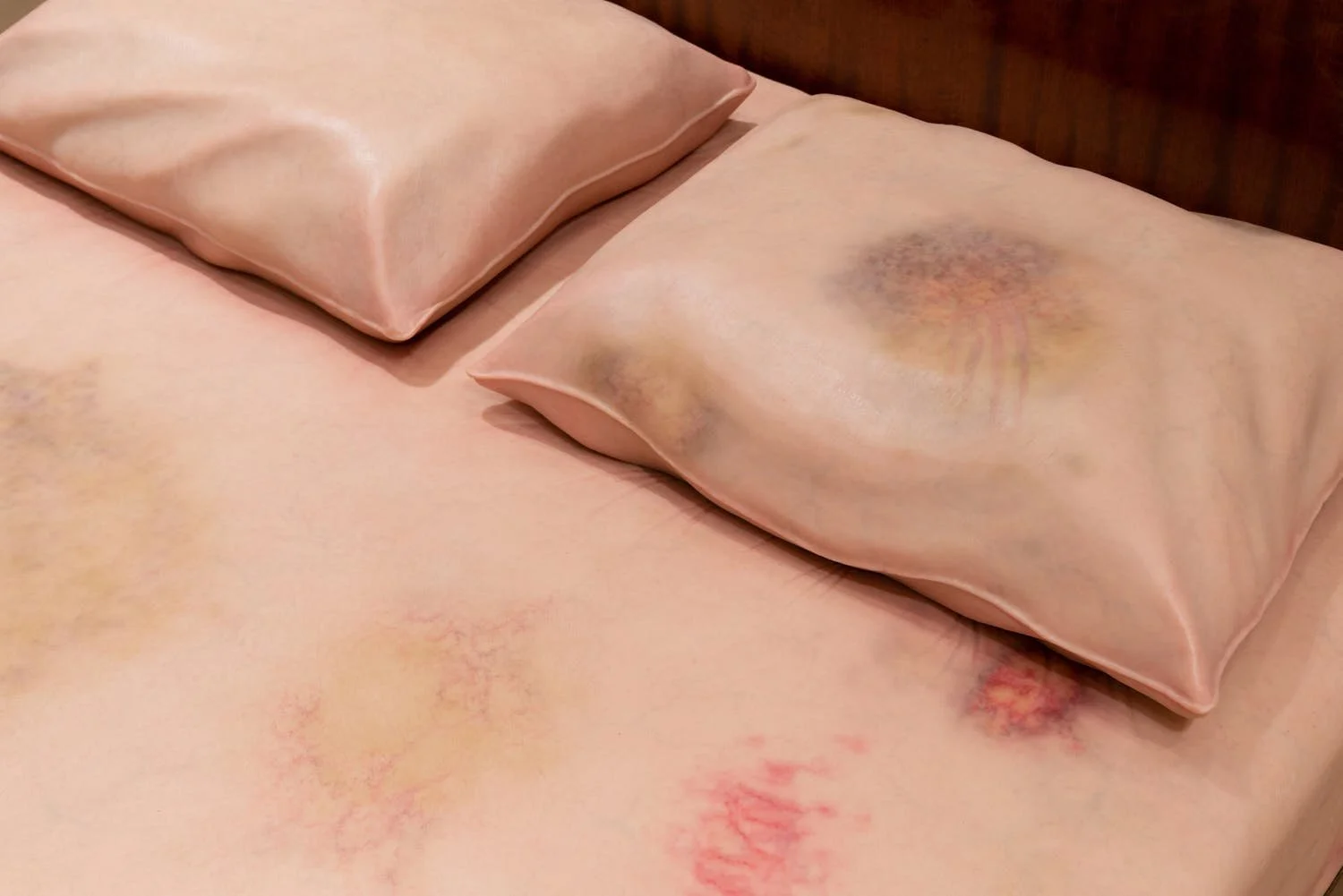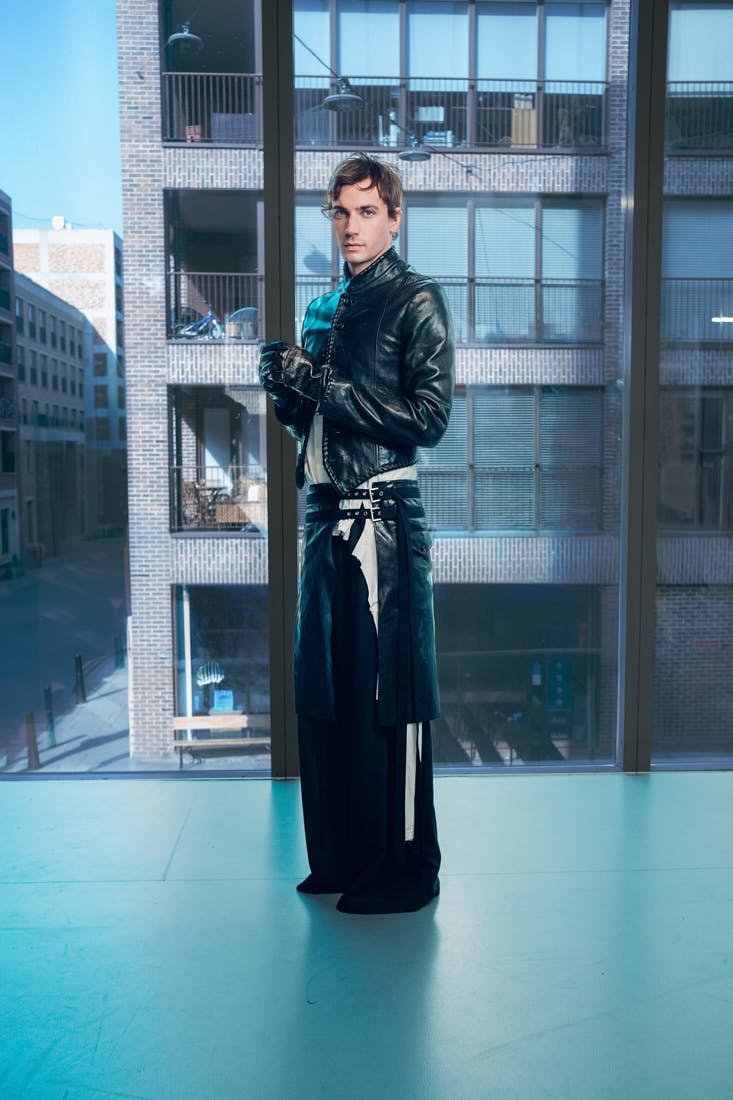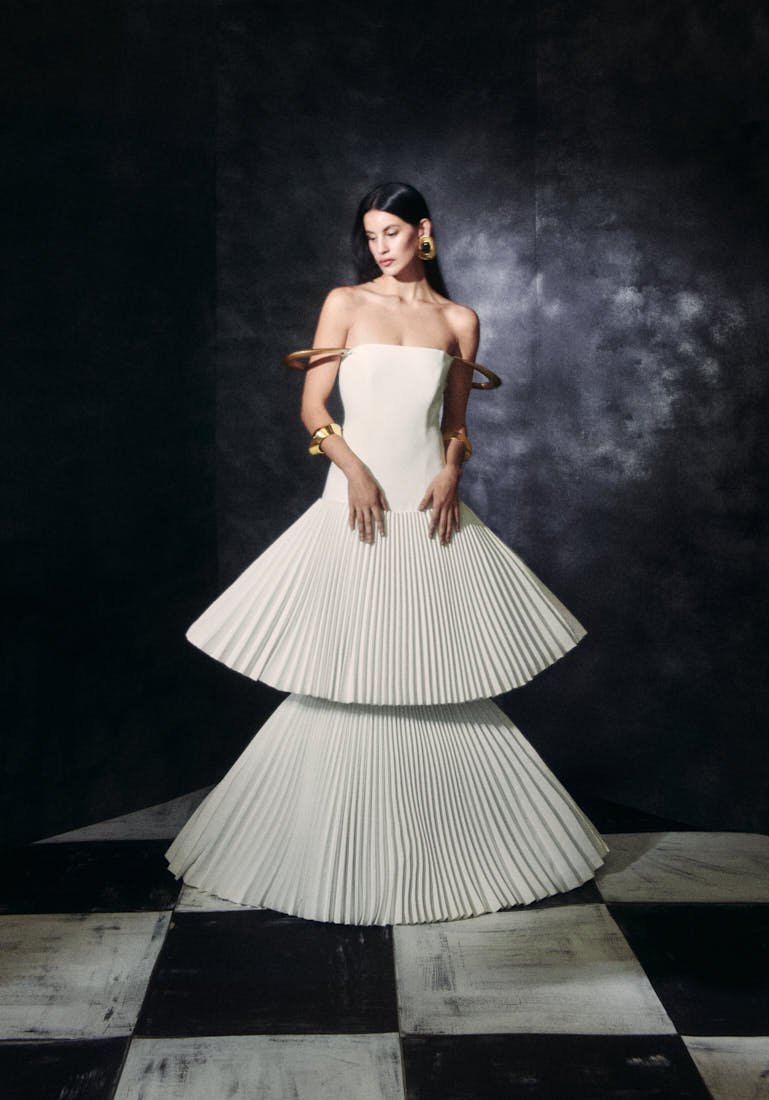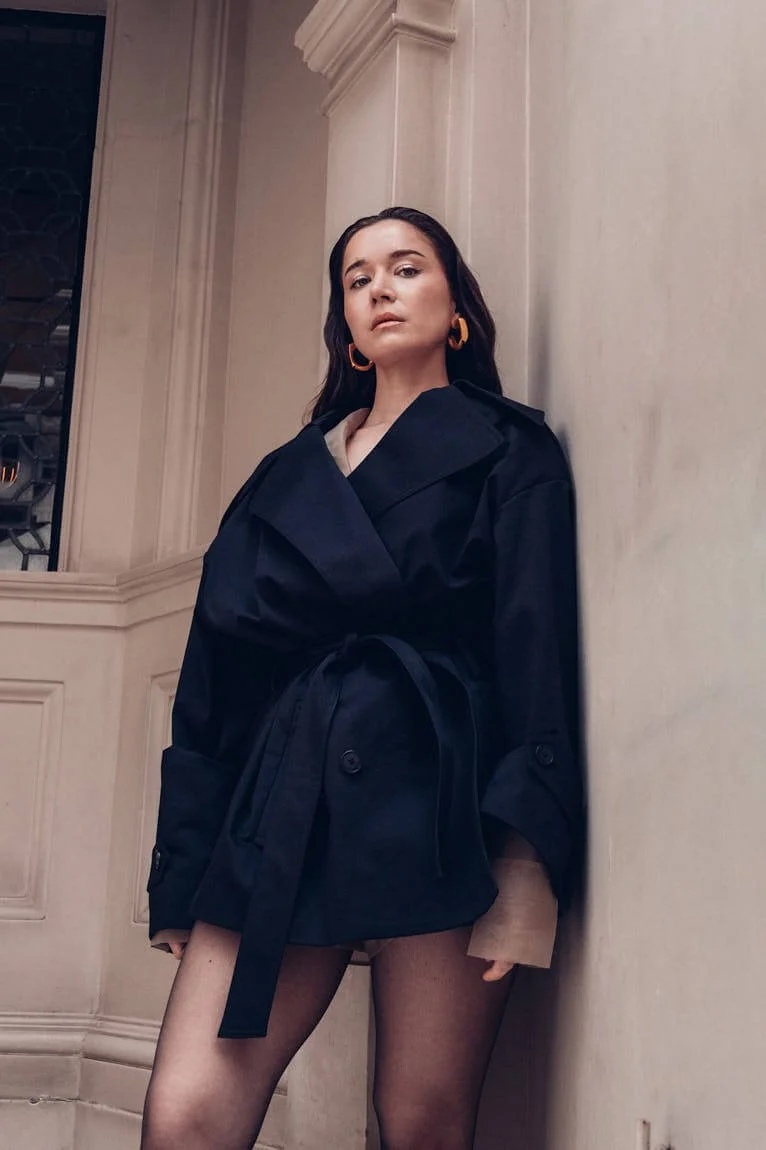RAPHAEL DIOGO
*Five Days Under Lights
interview CHIDOZI OBASI
written ALBAN E. SMAJLI
Raphael Diogo grew up between waves and asphalt, with Venice Beach feeding a body in constant movement, Jiu-Jitsu classes, soccer drills, skateboards, surfboards, mornings in Gold’s Gym where sweat turned into chance, a scout stopping, a conversation beginning, the kind that opens a door without announcing itself.
Modeling was already part of his family’s vocabulary, both parents carrying it as a lived memory, so when the first steps came it felt less like invention and more like continuation, though with the restless energy of someone who wants to carve out his own form.
total VALENTINO
“Getting the call for Jean Paul Gaultier’s Le Male campaign brought tears of joy, a moment of true fulfillment.”
Raphael Diogo speaks with Chidozie Obasi
for LE MILE .Digital
The notebooks filled with sketches, the hours of training, the steady rhythm of curiosity all folded into the way Raphael speaks about patience, about humility, about the strange elasticity of time inside this industry. He insists on gratitude as foundation, on respect as gesture, on presence as currency, and in that insistence there is no trace of calculation, only the sense of someone who has already faced enough uncertainty to know that the ground beneath him shifts constantly.
Jean Paul Gaultier’s Le Male campaign marked the rupture, five days in Bulgaria under lights and choreography, a job that required preparation of body and mind and delivered the quiet shock of tears when confirmation arrived, not from insecurity but from the sudden weight of arrival. That moment stretched into confidence, into a sense of place, into a reminder that careers are built in accumulations, in the way encounters layer upon each other, in how journeys fold back and expand again. Now in New York, Raphael continues the unfolding. Work, relationships, lessons, always the search for what comes next without a rush to define it too quickly. The horizon remains open, and with it the possibility of passing on everything he has gathered since 2019, the small fragments of knowledge, discipline, and energy that shape him in this present moment.
cap POLO RALPH LAUREN
shirt, sweater, coat + trousers PAUL SMITH
ring TITLE OF WORK
sneaker VANS
total EMPORIO ARMANI
custom eyewear KAT & PAUL AOUN
Chidozi Obasi
First things first: could you introduce yourself to us?
Raphael Diogo
My name is Raphael Diogo. I’m an American/Brazilian model, born and raised in Venice Beach, CA. I grew up staying active—whether it was Brazilian Jiu-Jitsu, playing soccer for the LA Galaxy Academy, or skating and surfing with friends. I’ve also always had a creative side, spending free time painting and sketching. I now live in New York City, where I’m continuing to pursue my modeling career.
What made you venture into modelling?
Funny enough, both of my parents used to be models. I never gave it much thought until I was scouted while working out at Gold’s Gym in Venice one morning. At first, I was a bit skeptical, but then I realized I had nothing to lose—so why not take the risk? It really helped having the support of my parents when I was taking those first steps.
When did you realize you wanted to make a career out of it?
I’ve always taken pride in giving my best in anything I do. After being scouted, I spent the first few months learning everything I could about the industry. What kind of jobs are out there? Who’s doing them? Can people really support themselves financially doing this? How do I get to the top? I became obsessed with the opportunities and how much creativity the industry allowed me to express. The spontaneity of it all—every day being different—kept me excited about what could come next.
What has been the most challenging aspect of modeling?
The hardest part has been staying patient with myself and my journey. It’s so easy to compare yourself to others, especially with social media. My self-belief is strong, but there are times when I forget how far I’ve come—especially when things don’t go the way I hoped. I’ve learned that timing is everything. We all want to be part of amazing experiences and hit certain milestones, but we have to trust that the time will come.
blazer FEAR OF GOD
tank top CALVIN KLEIN
leather pants RHUDE
shoes RALPH LAUREN
jewelry TITLE OF WORK
short + vest ISSEY MIYAKE
bracelet + necklace TITLE OF WORK
And how about your biggest pinch-me experiences?
That would definitely be getting the call that I was confirmed as the lead in Jean Paul Gaultier’s Le Male fragrance campaign. I flew to Bulgaria to shoot five days of TV commercials, print, and digital assets. It was the first time I really had to prepare myself—both physically and mentally—for a job. That experience gave me a level of confidence I hadn’t tapped into before. There were definitely tears of joy. It was a moment of true fulfillment.
Is there anything you’d change about your career?
Absolutely nothing. I’m incredibly grateful for every moment that has brought me to where I am today. To everyone who has believed in and supported me since day one—thank you from the bottom of my heart. There were plenty of tough times, but I’ve been fortunate to have a support system that encouraged me to keep striving for greatness.
What have been your biggest lessons?
The importance of humility and gratitude. It doesn’t matter who you are or what you’ve accomplished—what matters is how you present yourself and how you treat others. I aim to show up with a positive and professional attitude and to treat everyone with respect. We’re all human, and our time is valuable. I feel lucky to work with such talented individuals, and I’ll always do my best to spread love and positivity.
Final hopes?
I want to continue this journey for as long as possible. Building relationships and creating memories—that’s what it’s all about. Since starting in 2019, I’ve learned so much, and I’d love to pass that knowledge on to anyone just getting started.
shirt, blazer + trousers ZEGNA
necklace TITLE OF WORK
sneakers VANS
beret EMPORIO ARMANI
tank top CALVIN KLEIN
leather pants RHUDE
jewelry TITLE OF WORK
“I want to continue this journey for as long as possible. Building relationships and creating memories—that’s what it’s all about.”
Raphael Diogo speaks with Chidozie Obasi
for LE MILE .Digital
neck scarf HERMÈS
coat + jacket BRIONI
trousers DRIES VAN NOTEN
jewelry TITLE OF WORK
sneakers VANS
photographer ANKA GARBOWSKA
stylist TATIANA CINQUINO
grooming AMANDA WILSON
intro text ALBAN E. SMAJLI
talent RAPHAEL DIOGO
via HEROES MODEL MANAGEMENT



